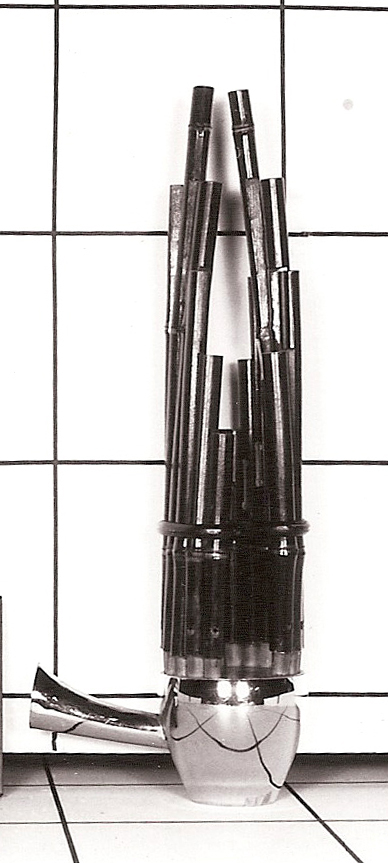This object is a mouth organ, or sheng from China. According to Chinese mythology the sheng was invented by Ling Lun, the legendary founder of music. The story of Ling Lun’s invention of music and a variety of traditional Chinese musical instruments is described in the Lüshi Chunqiu. The Lüshi Chunqiu, also known as “Spring and Autumn of Master Lü” in English, is a collection of legends from the late Warring States Period (475–221 BCE) in China. These legends were compiled by a number of royal retainers of Lü Buwei, the first emperor of the Qin Dynasty.
While mouth organs similar to the sheng are mentioned in Chinese literature as far back as the 12th century BC, one of the earliest known examples of this type of musical instrument has been dated to approximately 433 BCE. It was found in the tomb of Yi, marquis of Zeng (Zenghou Yi in Chinese). This tomb was discovered in Leigudun, Suixian in Hubei province and first excavated in the late 1970s by Chinese archaeologists. Over ten thousand funerary objects were discovered inside the tomb including more than 65 musical instruments.
Sheng come in several types, based on size and number of reed tubes used. They are made of a bundle of 17-36 reed tubes, which are seated on a small chamber. Traditionally, this chamber was made of a hollow gourd but in modern versions it is often metal, like the example at the UTSA Institute of Texan Cultures. The tubes are arranged to represent the folded wings of a phoenix, and the sound of the sheng (along with its Japanese cousin the sho) is sometimes described as resembling the sound of a phoenix. This type of instrument is played by blowing air into the mouthpiece or drawing air through the instrument, which circulates the air into the bamboo tubes where it vibrates tiny metal reeds. Because the instrument produces sound on both the inhale and exhale, long periods of uninterrupted sound are possible. This type of instrument is also capable of playing up to six musical notes at the same time.
Chinese immigrants played an important role in Texas history. Chinese laborers built much of the intercontinental railroad, including links in El Paso. In the 1880s Chinese immigrants made up a substantial portion of the population of El Paso, earning it the nickname “Chinese Mecca.” These immigrants came to the United States in search of jobs and some hoped to find gold, recently discovered in California.
However, when the gold rush ran dry many Chinese traveled to Texas to escape growing prejudice in California. In all, more than 300 Chinese settled in El Paso. There they became a vital part of the community operating nearly all the laundries in town. In this community the Chinese found a refuge from the harsh outside world. Here they were able to speak their native language and enjoy traditional Chinese music, like the sheng. However, even in El Paso, not all Texans welcomed Chinese immigrants. By the end of the 1800s anti-Chinese legislation made living in the United States particularly difficult for Chinese immigrants and many returned to China.
